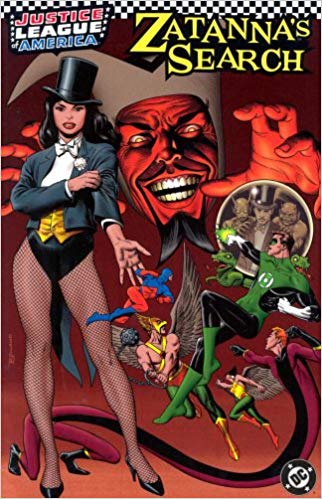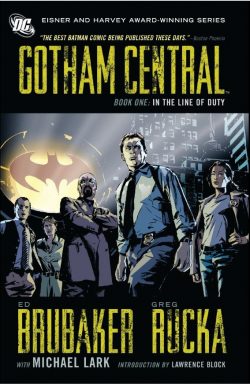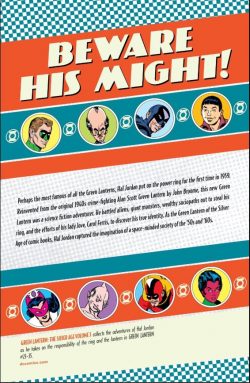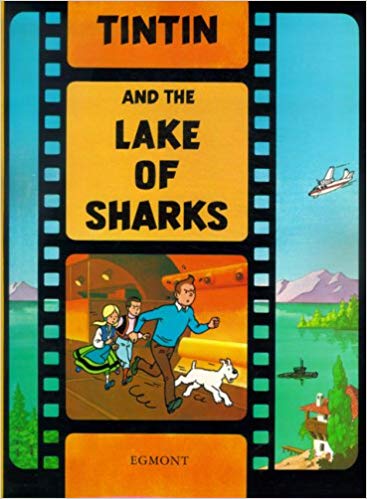
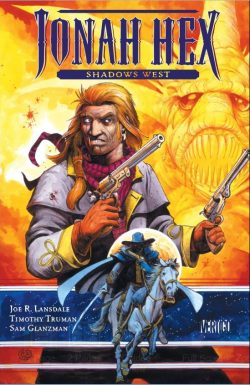
By Joe R. Lansdale, Timothy Truman, Sam Glanzman & various (DC/Vertigo)
ISBN: 978-1-4012-4715-7
As initially imagined by John Albano & Tony DeZuñiga, Jonah Hex is probably the most memorable western comic character ever created. He’s certainly the darkest and most grippingly realised, as is the brutal and uncompromising world he inhabits.
A ruthless demon with gun or knife or whatever is at hand, he hunts men for the price on their heads in the years following the American civil war, and the scars inside him are more shocking even than the ghastly ruin of his face.
DC – or National Periodicals as it then was – had run a notable stable of clean-cut gunslingers since the collapse of the super-hero genre in 1949, with such dashing – and immensely readable – luminaries as Johnny Thunder, The Trigger Twins, Nighthawk, Matt Savage and dozens of others in a marketplace that seemed limitless in its voracious hunger for chaps in chaps. However, all things end and comic tastes are notoriously fickle, and by the early sixties the sagebrush brigade had dwindled to a few venerable properties as an onslaught of costumed super-characters assaulted the newsstands and senses.
They too would temporarily pass…
As the 1960s closed, the thematic changes in the cinematic Cowboy filtered through to a comics industry suffering its second superhero retreat in twenty years. Although a critical success, the light-hearted Western series Bat Lash couldn’t garner a solid following, but DC, desperate for a genre that readers would warm to, retrenched and revived an old and revered title, gambling once again on heroes who were no longer simply boy scouts with six-guns.
the very model of the modern anti-hero, Jonah Hex, who first appeared in All-Star Comics #10: a vulgarly coarse and engagingly callous bounty hunter clad in a battered Confederate Grey tunic and hat.
With half his face lost to some hideous past injury, Hex was a brutal thug little better than the scum he hunted and certainly a man to avoid.
From the very start the series sought to redress some of the most unpalatable motifs of old-style cowboy literature and any fan of films like Soldier Blue and Little Big Man or Dee Brown’s iconoclastic book Bury My Heart at Wounded Knee will feel a grim sense of vicarious satisfaction and redress at most of the stories here.
There’s also a huge degree of world-weary cynicism that wasn’t to be found in other comics until well past the Watergate Scandal, the first time when America as a whole lost its social and political innocence. Sadly, not the last, though…
It was that edgy dissimilarity to standard comicbook fare that first attracted esteemed author, occasional comics scripter and devout Robert E. Howard fan Joe R. Lansdale (Bubba Hotep, Edge of Dark Water, Dead Aim) to the series as a child.
As his Introduction details, it’s also a large part of what convinced him and fellow craftsmen Timothy Truman (Grimjack, Scout, Turok: Dinosaur Hunter, Conan) and Sam Glanzman (USS Stevens, Haunted Tank, A Sailor’s Story, The Lonely War of Willy Schultz) to revive and reimagine the grizzled veteran in what turned out to be a highly popular and painfully controversial trio of adulted-oriented miniseries for DC’s Vertigo Comics imprint.
Collecting Jonah Hex: Two-Gun Mojo #1-5 (August-December 1993), Jonah Hex: Riders of the Worm and Such #1-5 (March-July 1995) and Jonah Hex: Shadows West #1-3 (February-April 1999), this volume – available in trade paperback and digital editions – also references heaping helpings of Spaghetti Western tropes, raw-edged Texan lore and attitudes, supernatural weirdness and some of the broadest, crudest, daftest belly-laugh humour ever seen in street-level American comics…
It all kicks off with Jonah Hex: Two-Gun Mojo as the bounty hunter is saved from lynching by the criminals he’s hunting. His saviour is nigh-decrepit aging manhunter Go Slow Smith. Together they despatch the outlaws who arranged the necktie party, but when the pecuniary lawmen try to claim the money on their latest gory prizes, they’re faced with bureaucratic obfuscation and delay.
That’s not too terrible as the town of Mud Creek has booze, beds and hot food, but when the sun goes down horror stalks Main Street and Smith is gunned down by a dead man…
Falsely accused of murder, Hex narrowly avoids another hanging and sets after traveling man Doc “Cross†Williams. When he tracks him down, however, the gunman realises the scientist has perfected a diabolical means of resurrecting the dead. It’s not so hard tackling the Doc’s bizarre coterie of ghastly freaks, but Hex has no chance against the wanderer’s star attraction, the undead but still lightning fast-draw Wild Bill Hickok.
The madman’s big mistake is trying to turn Hex into another zombie slave. After the hell-faced gunman gets way and regroups, Jonah undertakes a slow, relentless revenge that pulls Williams across the deadliest terrain in Texas and straight into the unforgiving sights of remorseless Apache renegades…
The result is a spectacular and breathtaking battle of wills you’ll never forget…
The creative band got back together for Jonah Hex: Riders of the Worm and Such: a truly inspired and deftly ridiculous spoof on western themes and attitudes with Hex cast as willing straight man in a yarn touching base with Robert E. Howard’s subterranean horror myths as viewed through Mel Brook’s Blazing Saddles.
In the searing inhospitable desert scrub a rather quaint English émigré is trying to establish a cattle ranch. He’s got lots of other strange ideas too, based on a lecture he once saw by Oscar Wilde.
At the Wilde West Ranch and Culture Emporium, Mr. Graves pays good wages and provides every amenity. He is well respected, but in return expects his doughty cowpokes to write and recite poetry, perform skits and enthusiastically burst into song at every opportunity.
Sadly, they got the enthusiasm down pat, but exhibit no discernible talent or artistic ability to underpin it…
When the restless Hex and his brash young sidekick stumble upon the cultural bastion, they have just barely survived an horrific encounter with a subterranean monster that drags people and animals beneath the earth to suck out their innards via efficiently-sliced off heads.
It’s not long before the newcomers realise the Englishman and his prairie troubadours are having their own encounters with the vile beasts.
When the effusive Graves reveals that the ranch previously belonged to a luckless fool named Errol Autumn an incredible tale emerges…
Autumn had set up his spread on land that had been contested for millennia by the local Indians and an antediluvian subhuman race dubbed the Worms of the Earth. After the idiot white man accidentally destroyed the wards and charms the natives had used to keep the monsters safely below, something escaped and raped his wife.
The offspring were still wandering the region and now seem intent on reviving that age-old war on humanity…
After one particularly hungry horror busts through the floor of Graves’s compound, Hex and the cowboys decide to take the battle to them and embark on a brain-blasting, ultimately cataclysmic voyage to the heart of hell, with the hybrid worm-children dogging their heels.
At least the underground argonauts can keep up their spirits with a song or two…
The bawdy and absurdist humour remain for the final outing but Jonah Hex: Shadows West also offers plenty of trenchant things to say about the treatment of native cultures too.
After another painful brush with ever-encroaching white civilisation and the stupidity of the law, Hex is induced by diminutive sharpshooter ‘Long Tom’ to join the shamefully low-rent Wild West Show of failed dentist and inveterate chancer Buffalo Will.
It’s an uncomfortable fit despite the huge salary and a reunion with old friend Spotted Balls. Will is an unrepentant shyster and charlatan and his white performers brutally and continually abuse the native hires.
After seeing how the men treat a squaw, Hex decides to quit and is astonished when she and Spotted Balls elect to come with him. The woman has an ulterior motive: her young son is the spawn of a spirit and looks it. He’s half bear, half human, talks and is the proposed means Buffalo Will plans to become stinking rich…
Happy to frustrate the evil impresario, Hex and his charges ride out in search of the spirit folk under ‘Gathering Shadows’ with Long Tom and a posse of killers in hot pursuit and a deadly race and mobile war of attrition ensues.
By the time the fugitives reach their destination, leaving bodies on both sides, ‘Final Shadows’ are falling and all hope seems lost. But even Hex’s cynical disbelief in mystic mumbo-jumbo takes a pounding when the child is reunited with the chief of the Bear Folk…
Raucous, excessively violent and bitingly funny, these irreverent yarns capture the spirit of the original Hex series whilst adding a modicum of unnatural unworldliness and outrageously lampooning the beloved cinema standbys of a bygone era.
If you love dry wit, trenchant absurdity and a non-stop bombardment of high-octane action, you must get this book.
© 1993, 1995, 1999, 2014 DC Comics. All Rights Reserved



